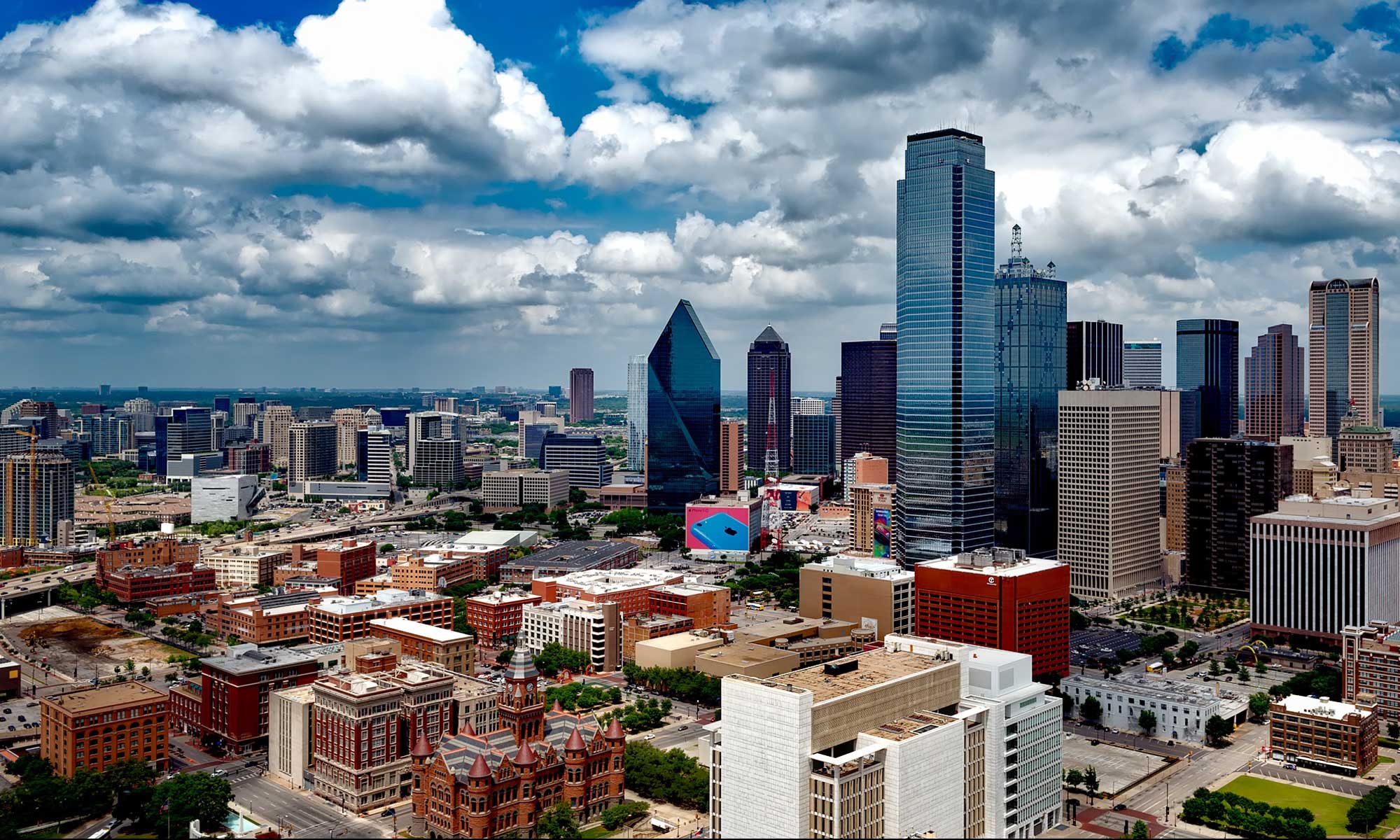Happy anniversary, Constant Reader! I started writing this blog on June 29, 2007, and this is my 101st post. That’s a lot of writing, when you come to think about it, especially almost all my posts have exceed 500 words — often by a good bit. So let’s see; assuming I’ve written something like 800 words for each of those entries, that’s about 80,000. Zounds! As they say, words fly when you’re havin’ fun.
Early on, I mentioned that while this blog would focus mostly on the immediate DFW metroplex, I’d try to go a bit further afield sometimes. I haven’t done that much, admittedly, since there’s so much to do near to hand. But with this entry and the one that follows I’m going to tell you all about my favorite state park ever: Dinosaur Valley, just outside of Glen Rose, a small town southwest of the metroplex. Glen Rose is about 75 miles from downtown Dallas, and just 50 miles from Fort Worth. Most of that distance is best traveled on rural highways, so while you won’t necessarily be able to zip along at 70+ mph, you’ll at least get to enjoy a scenic route.
Glen Rose is a charming burg, right on the edge of the Texas Hill Country. One of the things you’ll notice as you get into town is that they’re very into the whole dinosaurs and fossils thing. You’ll see businesses with both “dinosaur” and “fossils” in their names all over town, often with whimsical signs. This gives Glen Rose a unique edge, but the town would be lovely without it. It looks like a great place to raise a family, actually.
The action (and probably the town’s biggest source of controversy ) lies off FM 205, which intersects Highway 67 just to the west of town and goes in a northerly direction. Before you even get to Dinosaur Valley State Park, you encounter this:
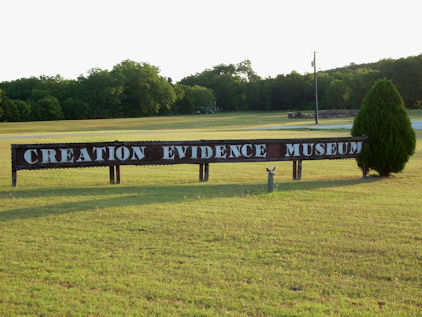
This is Dr. Carl Baugh’s loyal opposition to the idea that the Earth is older than 6,000 years. Among other things, he offers evidence that dinosaurs and humans once coexisted in Central Texas, despite overwhelming evidence that dinosaurs became extinct 60 million years before humans were even a gleam in Mother Nature’s eye. I’ll let you check out his site at your leisure. Most of his evidence is based on what some people have identified as human footprints in the same mudstones as existing dinosaur prints (of which I will show you a few later). All I have to say is this: a) some of those human footprints have claw marks, suggesting a saurian origin; and b) some are known fakes, having been carved back in the 1930s and 1940s to draw tourists to the area.
People have been building their fortunes on the fossils around here for decades (or at least trying to) and here’s a relatively new example that wasn’t there when I first visited Dinosaur Valley about ten years ago. I don’t know if your average T. rex was really orange, but hey — it’s Dinosaur World! (!!1!).
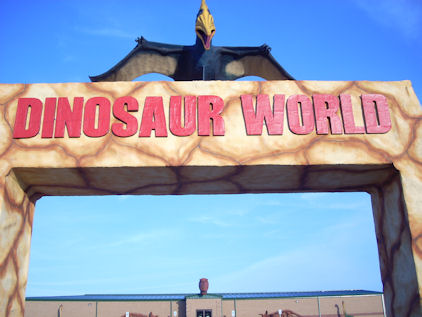
Once you turn onto the park road and move past the bombast, you finally get there!
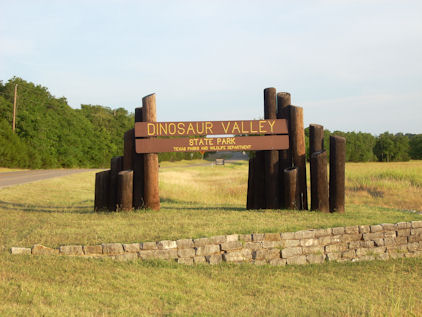
The park is a somewhat more sedate than DinoWorld, but they do remind you of their claim to fame in various subtle ways, not least of which is this Brontosaurus worked into the native fieldstone wall of the gatehouse, where they take your money. (By the way, it costs $5 per person for ages 12 and up; younger kids are free.)
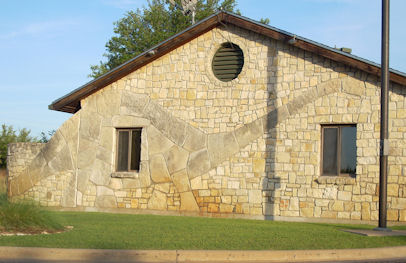
Further on, you encounter these guys, which were constructed by the Sinclair Oil Company back in the 1950s. Just in case you didn’t know, petroleum is basically liquefied dinosaurs (and other organisms, of course). That’s why it’s called a “fossil fuel,” and also explains why it’s relatively scarce.
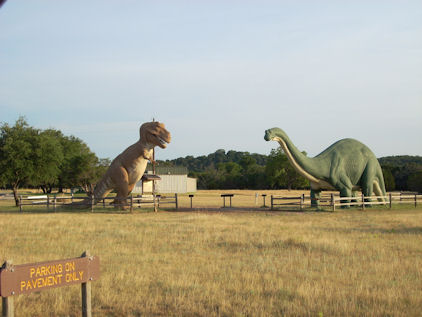
The park isn’t just a place to ooh and aww at the fossils left behind; you can also camp, picnic, ride horses, and go running. People were doing all these things when I was there, despite the fact that it couldn’t have been later than 7:30 in the morning when we arrived. Easily-read signs point you to the activity areas, including the gift shop, equestrian trail, amphitheater (where they have the occasional lecture and show the occasional film) and the surviving dino trackways, which represent the reason the park was established in the first place. Although a lot of the dinosaur tracks have been removed by scientists and fossil sellers over the years, and a lot of others have deteriorated substantially, there are still plenty to see. Once you’ve gotten to each of the three major trackways, you’ll find a substantial parking area as well as several nice signs, like this one, explaining what’s going on.
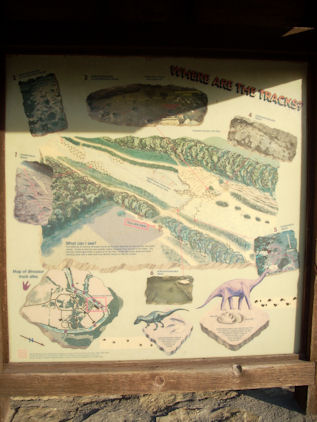
The track themselves are found in the shallow waters of the Paluxy River, which are eroding out an area that was once a shallow sea. It’s an enchanting place, with greenery galore and plenty of wildlife (which I’ll discuss in more detail in Part II). This picture was taken from a rock in the middle of the river, looking more or less south.
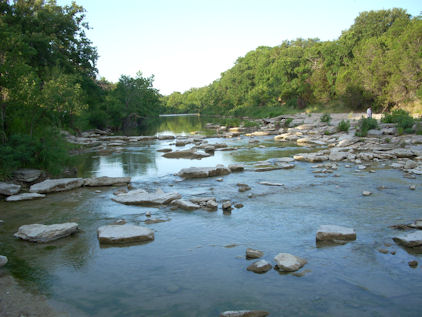
About 113 million years ago, if you believe in the scientific method, plant-eating dinosaurs were chased across the tidal flats by a relatively small T. rex relative called Acrocanthosaurus. This was the critter that left the big three-toed prints with the long middle toe that are so common at Dinosaur Valley. You can see one in the middle of this picture.
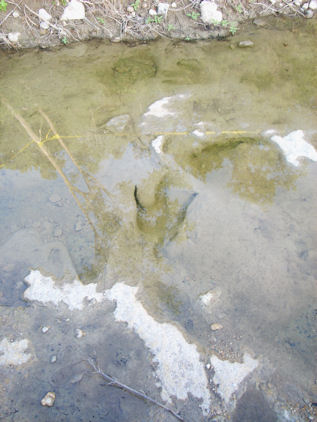
The stubby three-toed print visible at the top of the image is probably from a plant-eating Iguanodon. Otherwise, there are a lot of other rounded and irregular prints all over the place, apparently from the brontosaur-like Pleurocoelus. That’s what the circular prints are at the tops of the above picture. The one on the bottom is too eroded to know for sure.
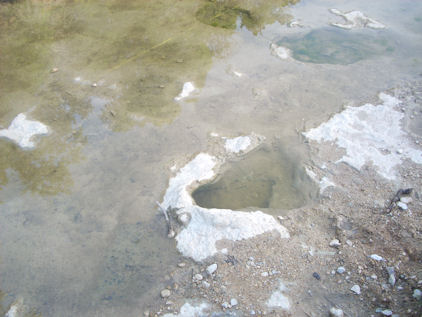
I’ve got lots more to show you, folks, so be sure to join me for more in the next exciting episode. There’ll be tracks galore, and more besides.
